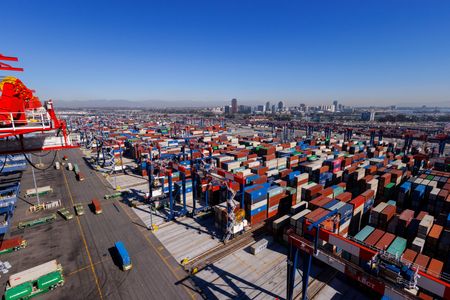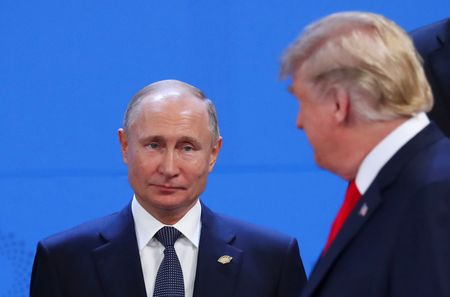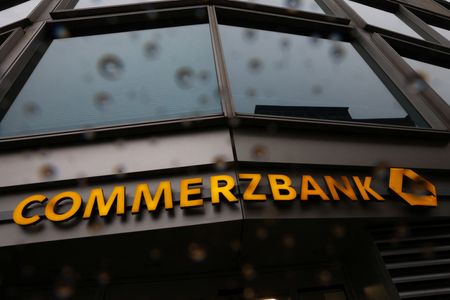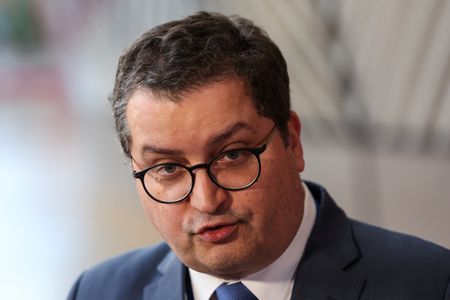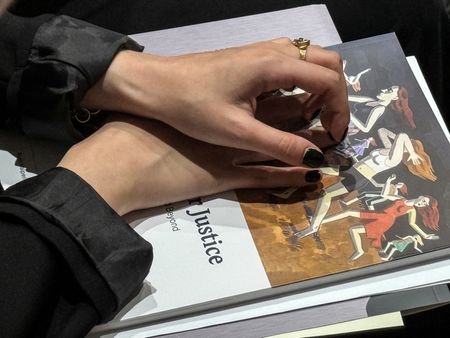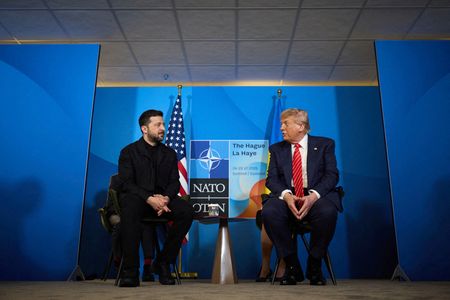WASHINGTON (Reuters) -U.S. President Donald Trump has ramped up his trade war this week, threatening sharply higher tariffs on 14 countries starting August 1 as his administration aims to finalize agreements with others.
Despite promises to work on 90 deals in 90 days, Trump and his team have been able to complete only a limited deal with Britain and a not well-defined agreement with Vietnam.
Here’s the state of play for several U.S. trading partners:
EUROPEAN UNION
Officials with the 27-member European Union, the largest bilateral trade partner of the U.S. say they are aiming for a deal before Aug. 1, with ongoing negotiations focused on “rebalancing” and concessions for key export industries. That could involve limited concessions to U.S. baseline tariffs of 10% for aircraft and parts, some medical equipment and spirits.
EU diplomats also are looking into an arrangement that would allow EU automakers that have large U.S. plants, like BMW and Mercedes, to import more EU-made vehicles at tariff rates below the current 25%.
JAPAN
The world’s fourth largest economy faces U.S. tariffs of 25% effective Aug. 1, despite talks that initially showed promise. Trump last week hammered Japan over what he said was Tokyo’s reluctance to import U.S.-grown rice, and accusing Japan of engaging in “unfair” autos trade. He has also called on Japan to import more U.S. oil.
Japan is seeking concessions for its large automobile industry as talks continue with the Trump administration.
SOUTH KOREA
South Korea, which likewise faces the threat of 25% tariffs starting Aug. 1, says it plans to step up talks and narrow its trade surplus with the U.S., which reached a record $55.6 billion in 2024. Negotiators are seeking reductions in Trump’s 25% auto and 50% steel tariffs that are currently in place, saying that will help rebuild U.S. manufacturing.
South Korea already imposes virtually no tariffs on U.S. imported goods under a free-trade agreement, and so the U.S. has focused on other issues, including foreign exchange rates and defense costs. Trump often complains about the cost-sharing arrangement for the 28,500 U.S. troops stationed in South Korea.
INDIA
Trump has long promised a trade deal with India, but talks have stalled on disagreements over U.S. tariffs on auto components, steel and agricultural goods.
India has signaled it is ready to slash its high tariff rates for the U.S. but has not conceded on Washington’s demands for opening up the agriculture and dairy sectors.
New Delhi also has proposed retaliatory duties against the U.S. at the World Trade Organization, saying Washington’s separate 25% tariff on automobiles and some auto parts would affect $2.89 billion of India’s exports.
INDONESIA
Trump is threatening a 32% tariff on Indonesia starting Aug. 1.
Indonesia has offered to cut duties on key imports from the United States to “near zero” and to buy $500 million worth of U.S. wheat. State-owned carrier Garuda Indonesia also plans to buy more Boeing planes as part of a $34 billion pact with U.S. partners.
Accused by some other countries of excessive red tape, Indonesia eased import licensing requirements for some goods and waived import restrictions on plastics, chemical products and other industrial raw materials on June 30. Indonesia has also invited the U.S. to jointly invest in a state-owned Indonesian minerals project.
THAILAND
Trump is threatening to impose a 36% tariff on Aug. 1. Thailand’s proposals have included reducing its own tariffs, purchasing more American goods and increasing investments.
Thailand’s initial proposal included measures to enhance market access for U.S. exports and tackle transshipment violations, as well as Thai investment that would create U.S. jobs. Bangkok said also pledged to import more U.S. natural gas and cut tariffs on imports of corn from the United States.
SOUTH AFRICA
South African President Cyril Ramaphosa says Trump’s threatened 30% tariff, due to take effect Aug. 1, is based on an inaccurate view of the two countries’ trade and said 77% of U.S. goods face no tariffs in his country.
South Africa proposed a trade deal in May when Trump hosted Ramaphosa in the White House and presented him with false claims of a “genocide” against whites in South Africa, but the two sides have yet to reach a deal.
As well as car parts and other manufactured goods, South Africa exports agricultural produce to the U.S. like fruit, wine and nuts.
CAMBODIA
Trump’s threatened tariff of 36% on Cambodian imports is a drop from the 49% he proposed in April, and the country is seeking further reductions. The tariffs have been an issue for Cambodia’s garments and footwear sector, a major employer and the biggest driver of its economy.
MALAYSIA
Malaysia, a key exporter of semiconductors and electronics, faces a levy of 25%, up from 24% threatened in April. Officials say that could dent palm-oil exports to the U.S.
OTHER COUNTRIES FACING TARIFF HIKES ON AUG. 1:
Laos (40%)
Myanmar (40%)
Bangladesh (35%)
Serbia (35%)
Bosnia and Herzegovina (30%)
Tunisia (25%)
Kazakhstan (25%)
(Reporting by Andy Sullivan and Andrea Shalal; Editing by Dan Burns, Lincoln Feast and Chizu Nomiyama)

